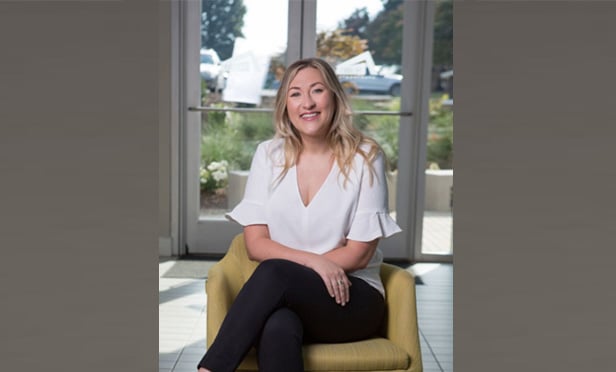Many real estate industry marketers are downgrading Facebook as their dominant social media platform. Now called Meta, the company has been heavily scrutinized lately, especially given their recent poor earnings report.
Once the gold standard for reaching those interested in buying or renting a home, other channels such as Instagram, LinkedIn and TikTok, are rising in performance. Facebook is still a prominent marketing channel, but it's losing share among real estate industry marketers.
Curbio is a company that helps real estate agents get homes market-ready, deferring all payment until the home sells. It targets real estate agents in its ad campaigns.
Recommended For You
In the past six months, Curbio has cut its marketing spend with Facebook by half. Its digital marketing manager, Madeleine Stearn, talked about her company's adjustments and what alternative social media strategies are working today and why.
While TikTok is getting most of the buzz, lately, Stearn said that LinkedIn right now is a close second in their overall spend behind Facebook, and investments in LinkedIn are increasing every month.
"Cutting spending by half is not small potatoes when you get into the hundreds of thousands of dollars range," she said. "Despite Facebook's promises of a bright future with Conversions API (CAPI), it became clear almost immediately that Facebook was nowhere near the powerhouse it was pre-iOS 14."
CAPI is a Facebook Business Tool that lets advertisers share customer actions from their servers directly to Facebook. CAPI works alongside the Facebook Pixel to help advertisers improve the performance, measurement, and data collection of their Facebook ad campaigns.
Why Waste Money?
Stearn said Curbio quickly decided, "Why waste budget on this platform? It's only getting more expensive and targeting capabilities are plunging further and further toward mediocre."
Curbio has since reallocated 50 percent of its previous Facebook spend to other channels. As its spend increases, it's not funneling any additional money to Facebook.
Stearn said Curbio is increasingly relying on LinkedIn, Google Ads, and smaller, more niche channels where our customers are spending time.
"The sad thing is — Curbio's prospects ARE on Facebook and Instagram," Stearn said. "Many brands' prospects still are. But that isn't exactly helpful if you have fewer opportunities to get in front of those people."
She said that because Curbio is a B2B company within a very specific industry (real estate) and is working with an even more specific set of customers (real estate agents), "there are actually a lot of opportunities for us to partner with industry-specific publications, podcasts, and training programs."
A Heavy Lean on Google
Curbio's Facebook budget is allocated automatically across both Facebook and Instagram because both types of ads are managed within the same interface.
"We still spend slightly more on Facebook per month than our other channels, but LinkedIn is a close second (and is increasing every month)," she said.
"We spend less on Google, but we're increasing that as well as we invest more in brand and awareness advertising on smaller channels," Stearn said. "Those channels are creating more search volume for Curbio, so we're able to lean more heavily on Google Ads than before."
Apartment operator Kate Good, Principal, Multifamily Development and Operations, Hunington Properties, Houston, said Google is her highest marketing spend.
"Facebook's effectiveness dropped for us by 33% year over year in 2021," she said. "Instagram is a shot in the dark, but effective with our followers. We get the most traffic with hashtags and profile tagging."
30 Lines helps apartment marketers maximize their digital advertising spend. Its president, Mike Whaling, tells GlobeSt that his firm's ad spend on Meta properties (Facebook, Instagram, Messenger) has declined 10% in the past year.
"That movement is based on current consumer behavior trends, rising ad costs on Meta, and reduced performance based on targeting restrictions and Apple privacy changes," Whaling said. "SnapChat and TikTok have done a better job at handling Apple's updates than Meta. Investments in CRM and marketing automation have also improved marketing results, so marketers simply don't need to spend as much on 'top of funnel' acquisition to fill the same pipeline."
Overall, social ads make up about 18% of Whaling's total ad spend across all of his clients. The remainder is split between search, video, display/geofencing, and emerging ad platforms — exclusive of any internet lising site spend. Meta made up 90+% of that social spend over the past 24 months.
"Lots of people are still on Facebook and Instagram every day, and good-quality Meta ad placements still perform reasonably well for most markets, particularly Instagram and Facebook Lead Ads," Whaling said.
"Messaging to businesses through Meta apps is actually increasing, and Marketplace continues to perform well in certain situations; it works well for more price-sensitive audiences."
Beyond Meta
For brands evaluating where to invest in social going forward, Whaling recommends testing TikTok if the real estate company has the creative or the ability and partnerships to create it. "This doesn't have to be 'influencer' content, either. The organic reach on TikTok right now is pretty remarkable compared to most other social channels."
Other social channels "where customers are," Whaling said, include LinkedIn, SnapChat, Nextdoor, Pinterest, and podcasts. "It's a tough balance – with record occupancy, most properties simply don't need to add new ad channels right now … but there's definitely a shift in where consumer attention is going, so we need to be preparing for that,' he said.
Search and Email Stronger Than Ever
Whaling tells GlobeSt that email remains 30 Lines' top ROI channel, particularly for clients that use it higher in the marketing funnel (not just for follow-ups and lead nurturing).
"Declines on Facebook are just one more reminder that social networks are rented space; marketers should be doing everything they can to build first-party data that helps them stay connected to prospects regardless of which social site is the flavor of the month," he said.
Search (organic and paid) is his top lead generation channel by far, with Google Business and Maps playing an increasingly larger role in that growth.
"It's not uncommon for search to account for 60% to 75% of all leads coming through a well-structured property website, and Google Posts have also fueled a significant number of leads from organic search," he said.
TikTok No Longer an Underdog
About a year ago, TikTok was still the underdog of social advertising, but the data is clearly showing now that this is a profitable channel, Stearn said.
"Its users are getting used to seeing ads on their For You pages, so ads are no longer jarring and have become an expected part of the platform," she said.
"Part of what I think makes TikTok such a successful marketing channel is that the ad creative is much more organic and TikTok-specific than other platforms, so we're absolutely jumping on this opportunity."
Curbio hasn't launched TikTok ads yet, "but we're immediately going to go big with spend, and will likely surpass Facebook spend in the next few months." Wow.
Also, "Real Estate TikTok" is booming, Stearn said. "It's the perfect time for Curbio to jump on board."
Marketing No Longer a 'Plug-and-Play' World
While digital advertising continues to soar, Stearn said that, apart from Google Ads, each channel she uses could be doing much better.
"We've had to rethink how we approach our paid advertising strategies, focusing much more on a holistic view that incorporates email, brand, PR, organic social, events, and programmatic," she said. "The reality is that our digital channels cannot provide the level of data that we're used to, so marketers need to get creative and more strategic. This is no longer just a 'plug-and-play' world.
Many e-commerce brands are still able to utilize Facebook for pointed marketing campaigns because their target audiences are typically broader, so there's a greater chance that their ads are reaching people who will find the ads relevant, Stearn said.
Nurturing Consumers in the Funnel
"For B2B and SaaS companies, though, Stearn said that Facebook's effectiveness is decreasing even faster."
B2B and SaaS advertising requires much more finesse on platforms like Facebook and Instagram."
"But was it ever? B2B and SaaS advertising frequently struggles on platforms like Facebook and Instagram, primarily because the products are much more difficult to explain and it can be tough to figure out which value prop resonates best on paid social.
"B2B and SaaS companies also tend to have much more specific customer personas than e-commerce — a loungewear brand can appeal to people of most ages, genders, and professions, but a CRM is only relevant to marketers (and the decision-makers within those marketing departments).
"That being said, there are still plenty of smart and successful tactics for B2B and SaaS advertising on paid social, it's just a much heavier lift, requires more complex strategy, and you have to be willing to accept that more of the 'wrong' consumers are going to see your ads. You just have to find a way to nurture the right users once they're in the funnel."
© Touchpoint Markets, All Rights Reserved. Request academic re-use from www.copyright.com. All other uses, submit a request to [email protected]. For more inforrmation visit Asset & Logo Licensing.






